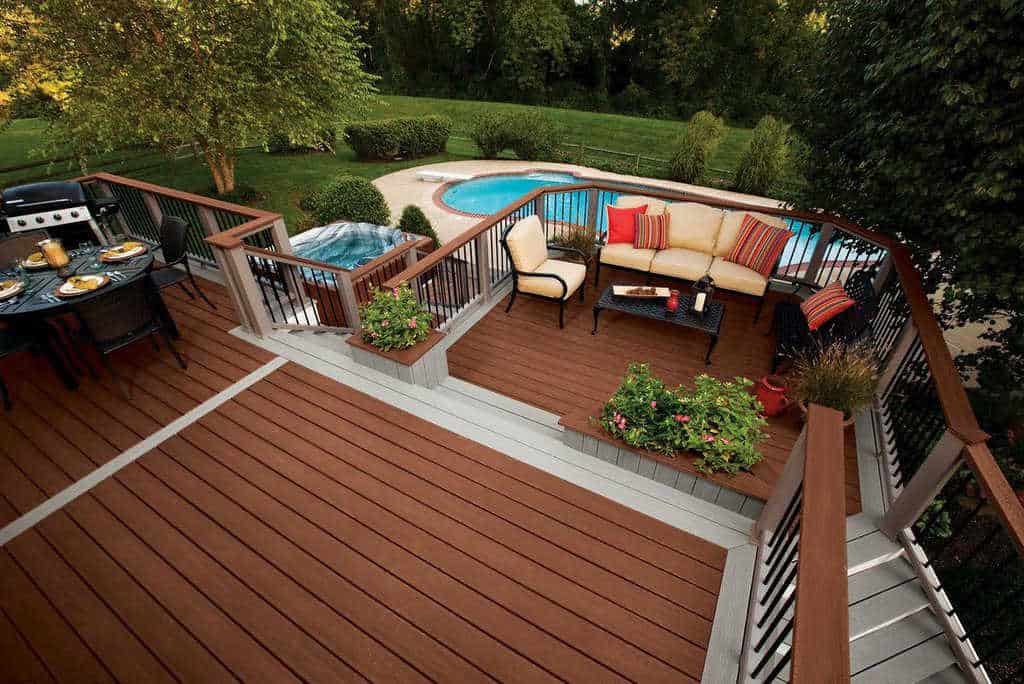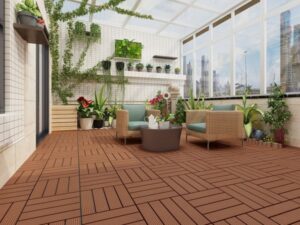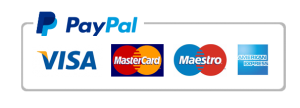WPC planks are a revolutionary flooring option that seamlessly blends the beauty of natural wood with the resilience of plastic. These planks are engineered using a combination of wood fibers and polymer materials, creating a robust and eco-friendly flooring solution.
What sets WPC planks apart is their exceptional durability and resistance to moisture, making them ideal for various settings, including kitchens, bathrooms, and basements. They offer the visual appeal of real wood with an extensive range of designs, colors, and textures, allowing homeowners to achieve their desired aesthetic.
WPC planks are also known for their ease of installation, often featuring a simple click-lock system that makes them DIY-friendly. Plus, their low-maintenance nature and long lifespan make them a cost-effective choice.
In this blog, we’ll explore the numerous advantages, installation process, design options, and more, to help you understand why WPC planks have become a go-to flooring solution for those seeking both style and durability in their homes.
What is WPC Plank ?
WPC planks are a type of flooring material made by combining wood fibers or wood flour with plastic polymers. This innovative composite material results in planks that offer a unique combination of the natural appearance of wood and the durability of plastic. WPC planks are commonly used as an alternative to traditional hardwood flooring, laminate, or vinyl due to their exceptional versatility and performance.
Key features of WPC planks include:
Durability: WPC planks are highly resistant to wear, scratches, and dents, making them suitable for high-traffic areas.
Waterproof: They are often waterproof or water-resistant, which means they can be installed in moisture-prone areas like bathrooms and kitchens without risk of damage.
Easy Installation: Many WPC planks come with user-friendly installation systems, such as click-and-lock mechanisms, making them suitable for DIY projects.
Aesthetics: WPC planks come in a wide range of designs, colors, and textures, allowing homeowners to achieve various looks, including those resembling hardwood, stone, or tile.
Low Maintenance: They require minimal maintenance and are easy to clean.
WPC planks have gained popularity in residential and commercial spaces as a stylish and practical flooring choice that combines the best of both wood and plastic properties.
WPC Planks differs from other
Composition: WPC planks are composed of a mixture of wood fibers or wood flour and plastic polymers. This unique combination sets them apart from traditional hardwood, laminate, and vinyl flooring, which are made primarily of one material.
Durability: WPC planks are known for their exceptional durability. They are highly resistant to wear and tear, making them suitable for high-traffic areas. This durability sets them apart from hardwood, which can be more susceptible to scratches and dents.
Water Resistance: Many WPC planks are waterproof or highly water-resistant. This feature makes them ideal for installation in areas prone to moisture, such as bathrooms and kitchens. In contrast, traditional hardwood is sensitive to moisture and can warp or swell.
Installation: WPC planks often feature user-friendly installation systems like click-and-lock mechanisms, making them easier to install compared to hardwood, which typically requires professional installation.
Aesthetics: WPC planks come in a wide range of designs, colors, and textures. They can mimic the appearance of hardwood, stone, or tile, providing diverse aesthetic options that set them apart from other flooring types.
Maintenance: WPC planks are generally low-maintenance and easy to clean, requiring less care compared to some hardwood and natural stone floors.
Advantages and Disadvantages of WPC Plank
Advantages of WPC Planks:
Durability: WPC planks are highly durable and resistant to wear, making them suitable for high-traffic areas in homes and commercial spaces.
Waterproof or Water-Resistant: Many WPC planks are waterproof, which means they can be installed in moisture-prone areas like bathrooms, kitchens, and basements without risk of damage.
Realistic Appearance: They come in a wide range of designs, colors, and textures, often closely mimicking the look of natural wood, stone, or tile.
Low Maintenance: WPC planks are easy to clean and require minimal maintenance, making them a convenient choice for busy households.
Comfortable Underfoot: They offer a comfortable and warm surface to walk on, making them more pleasant than cold, hard materials like ceramic tiles.
DIY-Friendly Installation: Many WPC planks feature simple click-and-lock or interlocking systems, allowing homeowners to install them as a DIY project, saving on installation costs.
Eco-Friendly: WPC planks often incorporate recycled materials and are considered more environmentally friendly than some other flooring options.
Stability: They are less prone to warping, cracking, or cupping compared to hardwood in varying humidity conditions.
Disadvantages of WPC Planks:
Cost: While WPC planks are often less expensive than hardwood flooring, they can be more expensive than some other flooring options, like laminate or vinyl.
Not as Authentic as Hardwood: While they mimic the appearance of wood, some people may prefer the authenticity and natural beauty of real hardwood.
Weight: WPC planks can be heavier than other flooring materials, which can be a consideration for upper-level installations or older structures.
Vulnerability to UV Light: Some WPC planks may fade or discolor when exposed to prolonged sunlight, so they may not be suitable for outdoor use or sun-drenched rooms.
Limited Repair Options: Unlike hardwood, which can be sanded and refinished, WPC planks typically cannot be refinished. Damaged planks may need to be replaced entirely.
Environmental Concerns: While WPC is considered more eco-friendly than some alternatives, it’s still a synthetic material and not as sustainable as natural wood.
Types of WPC Plank
There are several types of WPC planks available, each designed to cater to specific preferences, needs, and installation methods. Here are some common types:
Standard WPC Planks: These are the traditional WPC planks made from a mixture of wood fibers and plastic polymers. They are known for their durability, water resistance, and realistic wood-like appearance.
Enhanced WPC Planks: Enhanced WPC planks may feature additional layers or coatings for added durability and protection against wear and tear. These can include scratch-resistant or UV-resistant coatings to increase longevity.
Rigid Core WPC Planks: Rigid core WPC planks have a reinforced core layer that provides extra stability and resistance to impact and indentation. They are suitable for high-traffic areas and can be more dimensionally stable than standard WPC planks.
Foam-Backed WPC Planks: These planks come with an attached foam underlayment, providing additional comfort underfoot and noise reduction. They are often chosen for their enhanced sound-dampening properties.
Hybrid WPC Planks: Hybrid planks combine the characteristics of WPC and other materials, such as stone or cork, to create unique flooring options with specific benefits like added resilience, sound insulation, or thermal properties.
Click-Lock WPC Planks: These planks feature a click-and-lock installation system, making them easy for DIY installation without the need for adhesives or nails.
Glue-Down WPC Planks: Some WPC planks require adhesive for installation. This method provides a secure bond and is often preferred in commercial settings.
Floating WPC Planks: Floating WPC planks can be installed without adhesive or nails; they are instead held in place by interlocking mechanisms. This type is known for its ease of installation and versatility.
Wide Plank WPC Flooring: Wide plank WPC flooring mimics the appearance of wide hardwood planks, adding a sense of spaciousness and grandeur to a room.
Embossed or Textured WPC Planks: These planks have textured surfaces that mimic the feel of natural wood grain, adding authenticity and character to the flooring.
Commercial-Grade WPC Planks: Designed for heavy commercial use, these planks are engineered to withstand high traffic and are often used in commercial spaces like retail stores, offices, and restaurants.
Residential WPC Planks: These are typically designed for residential use and offer a balance between aesthetics, durability, and cost-effectiveness.
Conclusion
In conclusion, WPC planks represent a remarkable evolution in flooring technology, offering a harmonious blend of aesthetics and functionality. These planks have reshaped the flooring industry by providing a durable, versatile, and eco-friendly solution.
Their durability and resistance to wear and moisture make them ideal for a wide range of settings, from busy households to commercial spaces. WPC planks’ ability to mimic the appearance of natural materials like wood, stone, and tile adds to their allure, allowing homeowners to achieve their desired aesthetic without compromising on performance.
The low-maintenance nature of WPC planks simplifies upkeep, while user-friendly installation options cater to DIY enthusiasts. Although they have some drawbacks, such as cost and limited refinishing options, their overall advantages make them a compelling choice for anyone seeking an elegant, long-lasting, and easy-to-maintain flooring solution. WPC planks not only redefine the possibilities in interior design but also contribute to sustainability efforts by incorporating recycled materials. In essence, they represent a winning combination of form and function in modern flooring





